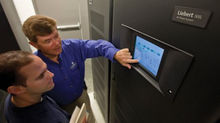Disaster in the Control Room
It has been about 3 months since we started our series of discussing common errors in the Control Room layout, and design. Over the course of this time we have broken down each conversation around specific factors that play a role in creating a dangerous environment. Line of sight, poor lighting and acoustics to name a few. However, most disregard acknowledging apparent issues unless presented with real life examples. I started thinking these design flaws must seem so miniscule to anyone who has been fortunate enough to have never seen the consequences.
Therefore, I decided to pull some recent instances that have occurred due to poor planning and cutting corners. Over the course of this discussion I will highlight two known cases in which we have seen disaster brought to a plant as a result of poor design concept.

Scenario 1: Lighting and Line of Sight
This was a direct example from Steve Whitely and Design Matters, who I will be doing a discussion on in the coming weeks. Not only is he an expert in Control Room Design, and Project Management, but he also has conducted numerous site audits and gap analysis identifying areas where potential catastrophe are present. This example came in a particular instance just as he was about to begin his audit.
“We were doing an onsite evaluation at a mid-sized oil storage facility (tank farm). It was late at night and we had conducted our initial interviews earlier in the day. The room was set up in a 2 x 2 orientation (two operators in front and two behind), and the lights were out (we do NOT recommend this). The night time operators were sitting in opposite consoles (front left and back right) in order to spread out and get some personal space. The operators had their alarm volume levels turned down (we do NOT recommend this either) and were relying heavily on visual recognition of alarms off of their DCS. The operator on the front row had his feet kicked up and he nodded off. The position of the operators and the high back chairs made it impossible for the operator on the back row to recognize that the operator on the front row was actually asleep. An alarm came into the control room on the front row operators DCS. He didn't see it and neither of the operators heard it. Apparently the alarm(s) had gone unnoticed for quite a while when the outside operator called into the control room on the radio in a (semi) panic. This woke up the operator who then had to scramble to get everything out of the ditch and back on the road. Had the outside operator not been walking past this particular issue when he did, the situation would have been much worse. As it was, the missed alarm due to the sleeping operator (which we believe was in part due to poor lighting) cost the plant quite a bit of down time (money).”
As you can see, it only takes one slip-up to turn a perfectly fluid operation to costing the entire organization downtime. Not only was the lighting in this scenario a major factor, but the line of sight was also poor. They had designed the room to run as individual components instead of operating as one unified operation. If the other operator in the room would have had a clear line of sight to every critical component in the room, this may have been prevented.
Scenario 2: Noise, Traffic, Acoustics in the Control Room
In this next scenario, the problems will be apparent immediately upon reading. Obviously, situations like this should never happen. Unfortunately, we sometimes lose focus and situations like this can pose a very real problem.
“We were in the control room conducting interviews, tracking entrees, traffic etc. when an unplanned event occurred in the plant. Immediately, the control room was over inundated with people (supervisors, engineers etc.). Everyone gathered behind the operator that was in control of that unit and began offering advice, asking questions etc. (again, we do NOT recommend this practice). The noise level escalated quickly. The console operator had a very hard time concentrating and communicating. At one point, while he was communicating with the outside operator on the radio, he replied 'NO' to a question asked by the outside operator. The outside operator thought he heard 'GO' as the answer to his question. Obviously there is a huge difference between NO and GO. While the choice of words could have been clearer, the noise within the control room (over the shoulder of the operator) is what negatively impacted the communication. They were able to get the situation under control but in this case it could have been much, much worse. (NOTE: When the outside operator came into the control room he was furious and basically said 'I couldn't hear a thing you were saying with everyone yelling and talking in the background).”
Conclusion
The fact of the matter is people make mistakes. Right now the number one risk to a control room is the human factor/component. We must design our control rooms in a way that reduces the probability of error by creating an environment supporting our operators. Not making their job more difficult.
Designing a control room must begin with putting the priorities of an operator’s role and responsibilities first. How traffic, acoustics, noise etc. play a role in allowing them to conduct their job efficiently, must be top of mind.
It is for these reasons that we are now starting to see a reverse design concept working around the needs of the operator’s first, and how that relates to the overall facility operation. We always enjoy discussing topics such as these and love hearing new insights. Should you ever want to discuss more, or are looking for help in this niche topic, reach out to Corey Wilson at Cwilson@LegacyDenver.com or visit our website here.







